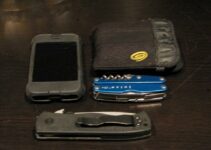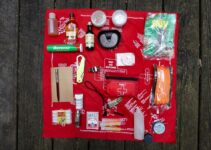Survival Items for Lighting
When it comes to survival situations, lighting is an essential item to have in your arsenal. It can help you navigate during the night, signal for help, or even provide a sense of comfort during a power outage. In this article, we will explore the different types of lighting items that you should consider including in your survival kit.
If you are looking for the best survival items for lighting, then you have come to the right place. We have scoured the internet and found the most recommended and reliable sources to help guide us in our research. We will cover everything from flashlights and lanterns to candles and solar lights. So, let's get started and find the best survival lighting items for your preparedness needs.
Types of Emergency Lighting
When it comes to choosing the best emergency lighting for survival situations, there are many options available. Each type of lighting has its own advantages and disadvantages.
1. Flashlights
Flashlights are a must-have item in any survival kit. They are portable, lightweight, and provide a concentrated beam of light. According to Primal Survivor, recommended brands include Streamlight ProTac HL-X, Fenix PD36R, and Olight Warrior X Pro. However, they require batteries, and the batteries may need to be changed frequently.
2. Lanterns
Lanterns are great for illuminating larger areas and can provide a more ambient light. They are also easy to use and can be hung up or placed on a flat surface. According to Outdoor Life, recommended brands include Goal Zero Crush Light, Black Diamond Apollo, and UST 30-Day Lantern. However, they are often heavier and bulkier than other lighting options.
3. Headlamps
Headlamps are perfect for hands-free lighting. They are lightweight and can be worn comfortably for extended periods. They are also great for close-up work or for reading. Primal Survivor recommends Petzl Actik Core, BioLite HeadLamp 330, and Black Diamond Spot. However, they may not provide as much light as other options.
4. Candles
Candles are a cheap and easy-to-find option for emergency lighting. They can provide a warm and comforting light, but they also pose a fire hazard. They are also not as bright as other options. Bug Out Bag Builder recommends UCO 9-Hour Candles and Emergency Candles by Candlelife.
5. Solar Lights
Solar lights are a great option for long-term use. They are powered by the sun and do not require batteries or fuel. They are also environmentally friendly. However, they may not be as reliable in cloudy or rainy weather. Primal Survivor recommends LuminAID PackLite Nova, Goal Zero Torch 250, and Nekteck Solar Powered Garden Spotlight.
When choosing your emergency lighting, it is important to consider your needs and the situation you may find yourself in. It is recommended to have multiple types of lighting in your survival kit to ensure you are adequately prepared for any situation. Make sure to have spare batteries, lighters, and fuel for your lighting sources, as well as backup lighting options such as glow sticks or bracelets, in case of emergencies.
Essential Gear for Emergency Lighting
When it comes to emergency lighting, it's not just the lighting sources that are important. Having the right gear to support your lighting items is crucial to ensure they are working when you need them the most.
1. Batteries
If you are using flashlights or other battery-powered lighting sources, having spare batteries is essential. According to Primal Survivor, it is recommended to have at least two sets of spare batteries for each lighting source. Make sure to choose the right type of batteries for your lighting source and keep them in a waterproof container.
2. Lighters and Matches
If you are using candles or other flame-based lighting sources, having a reliable lighter or matches is important. According to Bug Out Bag Builder, it is recommended to have at least two lighters or waterproof matches in your survival kit.
3. Fuel
If you are using lanterns or other flame-based lighting sources, having extra fuel is important. Make sure to choose the right type of fuel for your lighting source and keep it in a waterproof container. According to Bug Out Bag Builder, it is recommended to have at least one extra fuel canister or bottle for each lighting source.
4. Backup Lighting
Having backup lighting options is crucial in case your primary lighting sources fail. According to Bug Out Bag Builder, it is recommended to have at least two backup lighting options, such as glow sticks or bracelets, in your survival kit. These can also be used to identify family members or signal for help.
Make sure to regularly check and maintain your lighting sources and gear to ensure they are working properly. Having the right gear can make all the difference in a survival situation.
Safety Tips for Emergency Lighting
While emergency lighting is essential for survival situations, it is important to use them safely to prevent accidents and injuries. Here are some safety tips to keep in mind:
1. Keep Lighting Sources Away from Flammable Materials
Flame-based lighting sources, such as candles or lanterns, should be kept away from flammable materials, such as paper or cloth. Make sure to place them on a stable surface and keep them out of reach of children and pets.
2. Ventilation
If you are using flame-based lighting sources, make sure to use them in a well-ventilated area to prevent the buildup of harmful gases. Make sure to read the manufacturer's instructions carefully and follow them accordingly.
3. Use Caution When Handling Hot Surfaces
Flame-based lighting sources can become very hot. Make sure to use caution when handling them and avoid touching hot surfaces. Allow them to cool down before handling or refueling.
4. Prevent Tipping
Lanterns and other lighting sources can tip over easily, especially if they are placed on an unstable surface. Make sure to place them on a stable surface and use caution when moving them.
5. Properly Dispose of Batteries and Fuel
Batteries and fuel can be hazardous if not disposed of properly. Make sure to follow the manufacturer's instructions for disposal or recycling of batteries and fuel canisters.
6. Test Your Lighting Sources
Make sure to test your lighting sources before heading out on a trip or during a power outage. This will ensure that they are working properly and that you have all the necessary gear to support them.
By following these safety tips, you can ensure that your emergency lighting sources are used safely and effectively.
Final Thoughts
Having the right emergency lighting sources and gear can make all the difference in a survival situation. By choosing the right lighting sources and keeping them maintained, you can ensure that you are prepared for any situation.
Remember to consider your needs and situation when choosing your emergency lighting sources and gear. It is also important to use them safely to prevent accidents and injuries.
Check out our other great content for more tips and advice on survival and emergency preparedness.
Stay safe and prepared!
Common Questions
Who should have survival items for lighting?
Anyone who wants to be prepared for power outages or emergencies.
What are the best types of emergency lighting?
Electric lanterns and headlamps are the safest and most useful options.
How many backup lighting options should I have?
It is recommended to have at least two backup lighting options, such as glow sticks or bracelets.
What gear do I need to support my lighting items?
Batteries, lighters or matches, extra fuel, and waterproof containers are essential.
How can I use emergency lighting sources safely?
Keep them away from flammable materials, use in a well-ventilated area, and follow manufacturer instructions.
What should I do with batteries and fuel after use?
Follow the manufacturer's instructions for safe disposal or recycling.


